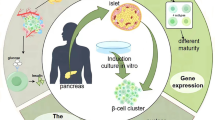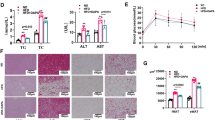Abstract
Adipocytes play a vital role in glucose metabolism. 3T3 L1 pre adipocytes after differentiation to adipocytes serve as excellent in vitro models and are useful tools in understanding the glucose metabolism. The traditional approaches adopted in pre adipocyte differentiation are lengthy exercises involving the usage of IBMX and Dexamethasone. Any effort to shorten the time of differentiation and quality expression of functional differentiation in 3T3 L1 cells in terms of enhanced Insulin sensitivity has an advantage in the drug discovery process. Thus, there is a need to develop a new effective method of differentiating the pre adipocytes to adipocytes and to use such methods for developing efficacious therapeutic molecules. We observed that a combination of Dexamethasone and Troglitazone generated differentiated adipocytes over fewer days as compared to the combination of IBMX and Dexamethasone which constitutes the standard protocol followed in our laboratory. The experiments conducted to compare the quality of differentiation yielded by various differentiating agents indicated that the lipid droplet accumulation increased by 112 % and the GLUT4 mediated glucose uptake by 137 % in cells differentiated with Troglitazone and Dexamethasone than in cells differentiated traditionally. The comparative studies conducted for evaluating efficient measurable glucose uptake by GOPOD assay, radioactive 3H-2-deoxy-D-glucose assay and by non-radioactive 6-NBDG (fluorescent analog of glucose) indicated that the non-radioactive method using 6-NBDG showed a higher signal to noise ratio than the conventional indirect glucose uptake method (GOPOD assay) and the radioactive 3H-2-deoxy-D-glucose uptake method. Differentiated 3T3 L1 cells when triggered with 2.5 ng/mL of Insulin showed 3.3 fold more glucose uptake in non-radioactive method over the radioactive 3H-2-deoxy-D-glucose uptake method. The results of this study have suggested that a combination of Dexamethasone and Troglitazone for 3T3 L1 cell differentiation helps in better quality differentiation over a short period of time with increased sensitivity to Insulin. The application of these findings for developing new methods of screening novel Insulin mimetics and for evaluating the immunological responses has been discussed.








Similar content being viewed by others
References
Balachandran A, Guan H, Sellan M, van Uum S, Yang K (2008) Insulin and dexamethasone dynamically regulate adipocyte 112- hydroxysteroid dehydrogenase type 1. Endocrinology 149:4069–4079
Barros LF, Bittner CX, Loaiza A, Ruminot I, Larenas V, Moldenhauer H, Oyarzun C, Alvarez M (2009) Kinetic validation of 6-NBDG as a probe for the glucose transporter GLUT 1 in astrocytes. J Neurochem 109:94–100
Beloor J, Kang HK, Moon YS (2010) Serum lipids can convert bovine myogenic satellite cells to adipocytes. Asian Aust J Anim Sci 23:1519–1526
Brun RP, Kim JB, Hu E, Altiok S, Spiegelman B (1996) Adipocyte differentiation: a transcriptional regulatory cascade. Curr Opin Cell Biol 8:826–832
Camp HS, Whitton AL, Tafuri SR (1999) PPARγ activators down-regulate the expression of PPARγ in 3T3 L1 adipocytes. FEBS Lett 447:186–190
Chapman AB, Knight DM, Dieckmann BS, Ringold GM (1984) Analysis of gene expression during differentiation of adipogenic cells in culture and hormonal control of the developmental program. J Biol Chem 259:15548–15555
Coleman RA, Reed BC, Mackall JC, Student AK, Lane MD, Bell RM (1978a) Selective changes in microsomal enzymes of triacylglycerol, phosphatidylcholine, and phosphatidylethanolamine biosynthesis during differentiation of 3T3-L1 preadipocytes. J Biol Chem 253:7256–7261
Coleman RA, Reed BC, Mackall JC, Student AK, Daniel Lane M, Bell RM (1978b) Selective changes in microsomal enzymes of triacylglycerol phosphatidylcholine, and phosphatidylethanolamine biosynthesis during differentiation of 3T3-Ll preadipocytes. J Biol Chem 253:7256–7261
Cornelius P, MacDougald OA, Lane MD (1994) Regulation of adipocyte development. Annu Rev Nutr 14:99–129
Cowherd RM, Lyle RE, McGehee RE Jr (1999) Molecular regulation of adipocyte differentiation. Semin Cell Dev Biol 10:3–10
Ducluzeau PH, Fletcher LM, Vidal H, Laville M, Tavaré JM (2002) Molecular mechanisms of insulin-stimulated glucose uptake in adipocytes. Diabetes Metab 28:85–92
Erding H, Tontonoz P, Spiegelman BM (1994) Transdifferentiation of myoblasts by the adipogenic transcription factors PPARγ and C/EBPα. Proc Natl Acad Sci 92:9856–9860
Grant AC, Ortiz-Colòn G, Doumit ME, Buskirk DD (2008) Optimization of in vitro conditions for bovine subcutaneous and intramuscular preadipocyte differentiation. J Anim Sci 86:73–82
Hostetler HA, Huang H, Kier AB, Schroeder F (2008) Glucose directly links to lipid metabolism through high affinity interaction with peroxisome proliferator-activated receptor α. J Biol Chem 283:2246–2254
International Diabetes Federation (2011) http://www.idf.org/2012-2012strategy
Jung D-W, Ha H-H, Zheng X, Changb Y-T, Williams DR (2011) Novel use of fluorescent glucose analogues to identify a new class of triazine-based insulin mimetics possessing useful secondary effects. Mol Biosyst 7:346–358
Klemm DJ, Wayne Leitner J, Watson P, Nesterova A, Reusch JEB, Goalstone ML, Draznin B (2001) Insulin induced adipocyte differentiation. J Biol Chem 276:28430–28435
Lakshmanan J, Elmendorf JS, Özcan S (2003) Analysis of insulin stimulated glucose uptake in differentiated 3T3 L1 adipocytes. Methods Mol Med™: Diabetes Mellitus Methods Protoc 83:97–103
Lawrence JC Jr, Piper RC, Robinson LJ, James DE (1992) GLUT 4 facilitates insulin stimulation and cAMP-mediated inhibition of glucose transport. Proc Natl Acad Sci 89:3496–3497
Li Y, Yue-bai L, Yi-sheng W (2006) Dexamethasone-induced adipogenesis in primary marrow stromal cell cultures: mechanism of steroid-induced osteonecrosis. Chin Med J 119(7):581–588
Lin F-T, Daniel Lane M (1994) CCAAT/ enhancer binding protein α is sufficient to initiate the 3T3-L1 adipocyte differentiation program. Proc Natl Acad Sci 91:8757–8761
Lloyd PG, Hardin CD, Sturek M (1999) Examining glucose transport in single vascular smooth muscle cells with a fluorescent glucose analog. Physiol Res 48:401–410
Morris NJ, Ross SA, Lane WS, Moestrup SK, Petersen CM, Keller SR, Lienhard GE (1998) Sortilin is the major 110-kDa protein in GLUT4 vesicles from adipocytes. J Biol Chem 273:3582–3587
Oatey PB, Van Weering DHJ, Dobson SP, Gould GW, Tavare JM (1997) GLUT 4 vesicle dynamics in living 3T3 L1 adipocytes visualized with green-fluorescent protein. Biochem J 327:637–642
Rubin CS, Hirsch A, Fung C, Rosen OM (1978) Development of hormone receptors and hormonal responsiveness in vitro. J Biol Chem 253(20):7570–7578
Shao D, Lazar MA (1997) Peroxisome proliferator activated receptor γ, CCAAT/enhancer-binding protein α, and cell cycle status regulate the commitment to adipocyte differentiation. J Biol Chem 272:21473–21478
Shugart EC, Umek RM (1997) Dexamethasone signaling is required to establish the postmitotic state of adipocyte development. Cell Growth Differ 8:1091–1098
Somwar R, Kim DY, Sweeney G, Huang C, Niu W, Lador C, Ramlal T, Klip A (2001) GLUT4 translocation precedes the stimulation of glucose uptake by insulin in muscle cells: potential activation of GLUT4 via p38 mitogen-activated protein kinase. Biochem J 359:639–649
Speizer L, Haugland R, Kutchai H (1985) Asymmetric transport of a fluorescent glucose analogue by human erythrocytes. Biochim Biophys Acta 815:75–84
Tchoukalova YD, Hausman DB, Dean RG, Hausman GJ (2000) Enhancing effect of troglitazone on porcine adipocyte differentiation in primary culture: a comparison with dexamethasone. Obes Res 8:664–672
Yoo W, Lee J, Park S, Kim Y-S, Lim C, Yoon E, Hur G, Oh J (2010) Albumin expression is required for adipocyte differentiation of 3T3-L1 cells. Biochem Biophys Res Commun 397:170–175
Zacarias Ramirez JL, Castro-Munozledo F, Kuri-Harcuch W (1992) Quantitation of adipose conversion and triglycerides by staining intracytoplasmic lipids with Oil red O. Histochemistry 97:493–497
Zaid H, Antonescu CN, Randhawa VK, Klip A (2008) Insulin action on glucose transporters through molecular switches, tracks and tethers. Biochem J 413:201–215
Zilberfarb V, Siquier K, Strosberg AD, Issad T (2001) Effect of dexamethasone on adipocyte differentiation markers and tumour necrosis factor α expression in human PAZ6. Diabetologia 44:377–386
Acknowledgments
This research was supported and funded by Clinigene International Limited.
Competing interests
The authors declare that they have no competing interests.
Author information
Authors and Affiliations
Corresponding authors
Additional information
Authors’ contribution
DV designed and conducted experiments on Insulin sensitivity (non-radioactive), Cell viability, differentiation and jointly wrote the manuscript. HS designed and conducted experiments on Insulin sensitivity (non-radioactive fluorescent analog), differentiation and jointly wrote the manuscript. MSP performed experiments on Insulin sensitivity (radioactive) and GLUT4 inhibition. SS performed Oil Red O staining, experiments on dye elution and differentiation. SKA was associated in Insulin sensitivity (radioactive) and cell preparation. KD and MND initiated the projects, reviewed all designed experiments and the manuscript. All authors helped in discussing, reading and proofreading the final manuscript.
Divya Vishwanath and Harini Srinivasan contributed equally to this work
Rights and permissions
About this article
Cite this article
Vishwanath, D., Srinivasan, H., Patil, M.S. et al. Novel method to differentiate 3T3 L1 cells in vitro to produce highly sensitive adipocytes for a GLUT4 mediated glucose uptake using fluorescent glucose analog. J. Cell Commun. Signal. 7, 129–140 (2013). https://doi.org/10.1007/s12079-012-0188-9
Received:
Accepted:
Published:
Issue Date:
DOI: https://doi.org/10.1007/s12079-012-0188-9




